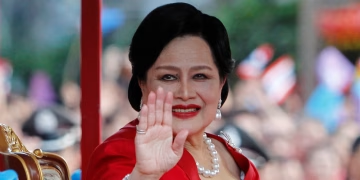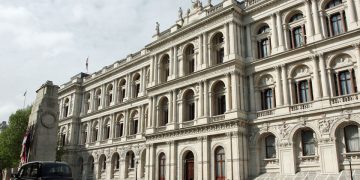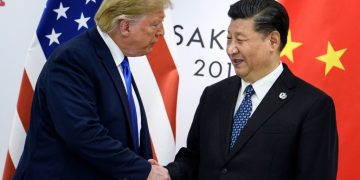During his high-profile Asia tour, former U.S. President Donald Trump projected optimism about finalizing a long-awaited trade agreement with China, suggesting that a deal could be completed “within days.” The statement came during a joint press conference in Tokyo with Japanese Prime Minister Fumio Kishida, where both leaders discussed trade, regional security, and the Indo-Pacific economic landscape.
The Setting: Asia Tour with Strategic Objectives
Trump’s Asia trip, spanning Japan, South Korea, and Vietnam, aimed to strengthen economic ties with U.S. allies while addressing the lingering trade tensions between Washington and Beijing. The visit comes amid a backdrop of renewed global competition and geopolitical uncertainty, as both the United States and China vie for economic influence across Asia.
Speaking in Tokyo, Trump highlighted the progress made in negotiations between his team and Chinese officials. “We’ve made tremendous strides — we’re closer than ever to a historic trade deal with China,” Trump declared. “It could be done within days, maybe even sooner.”
His remarks echoed his past tendency to present optimistic timelines, but they also underscored the urgency of stabilizing economic relations with the world’s second-largest economy.
The Trade Negotiations: Background and Challenges
The U.S.–China trade talks have been ongoing since 2018, when Trump first launched a series of tariffs on Chinese imports, citing unfair trade practices, intellectual property theft, and a massive trade imbalance. While several partial agreements have been reached, a comprehensive deal covering all outstanding issues has remained elusive.
The latest round of discussions reportedly focused on reducing tariffs, expanding U.S. exports to China, and establishing stronger enforcement mechanisms for intellectual property rights. According to sources close to the negotiations, both sides are working on final technical details before an official signing ceremony could take place in Beijing or Washington.
Despite optimism from Trump’s team, analysts have cautioned that structural disagreements — particularly over technology transfer and market access — continue to pose hurdles.
Japan’s Role: Partnership and Regional Balance
In Japan, Trump’s discussions extended beyond the trade deal. He met with Prime Minister Kishida to reaffirm U.S.–Japan cooperation on trade and defense. Japan, as a close U.S. ally, has a vested interest in a stable economic relationship between Washington and Beijing, given its deep trade ties with both powers.
Kishida expressed support for Trump’s efforts to bring balance to global trade relations, stating, “A fair and open economic order benefits all nations. We welcome efforts that promote stability in the global trading system.”
The two leaders also discussed joint initiatives under the Indo-Pacific Economic Framework (IPEF), an arrangement designed to counterbalance China’s growing influence in the region through infrastructure investment and digital trade partnerships.
Economic Implications
If finalized, the trade agreement could have significant implications for global markets. Economists suggest that easing tensions between the U.S. and China might stabilize commodity prices, improve investor confidence, and strengthen the U.S. dollar.
For American farmers and manufacturers, a new trade pact could mean expanded access to Chinese markets. Trump highlighted this point during his Tokyo remarks, saying, “Our farmers have been patient for too long. This deal will open the Chinese market for American agriculture and industry like never before.”
Stock markets in Asia responded positively to Trump’s comments, with Japan’s Nikkei index and Hong Kong’s Hang Seng seeing modest gains. However, some analysts warned that premature optimism could lead to volatility if negotiations stall.
Critics’ Perspective
Critics, including Democratic lawmakers and trade experts, urged caution. They argued that Trump’s past trade deals often prioritized optics over substance, pointing to unresolved enforcement issues in earlier agreements.
“Announcing progress is one thing; implementing lasting change is another,” said a trade analyst at the Peterson Institute for International Economics. “The structural challenges in U.S.–China trade relations are far too deep to be resolved in just a few days.”
Chinese officials, for their part, offered a measured response. A spokesperson for China’s Ministry of Commerce stated that “negotiations remain constructive,” but emphasized that any deal must respect “mutual interests and equality.”
Regional Security Discussions
Beyond economics, Trump’s Asia tour included talks on security challenges in the region. In Tokyo, he reiterated America’s commitment to defending its allies against potential threats from North Korea and maintaining freedom of navigation in the South China Sea.
The former president praised Japan’s efforts to strengthen its defense capabilities and lauded the growing cooperation among Quad members — the U.S., Japan, India, and Australia.
“We are building a future where the Indo-Pacific remains free and open, not dominated by coercion,” Trump asserted during a public address at Tokyo’s Keio University.
Historical Context: Trump’s Asia Legacy
During his presidency, Trump made Asia a central focus of his foreign policy, often mixing economic nationalism with assertive diplomacy. His administration’s “America First” approach redefined trade relationships but also strained alliances at times.
Observers noted that this latest Asia trip seems aimed at reinforcing Trump’s foreign policy credentials as he eyes a potential return to the White House. The promise of a major China trade deal could bolster his image as a dealmaker ahead of the next election cycle.
Looking Ahead
As Trump departed Tokyo for Seoul, anticipation continued to build over whether his prediction of a trade breakthrough would materialize. If the deal does come through, it could mark one of the most significant economic agreements between the world’s two largest economies in recent years.
Yet skepticism remains. Analysts warn that even a signed agreement may not eliminate underlying tensions. Issues like technology competition, human rights, and supply chain security are likely to persist.
For now, the world watches as Trump’s Asia tour continues — with markets, allies, and critics alike awaiting the next move in what could be a defining chapter of U.S.–China relations.












